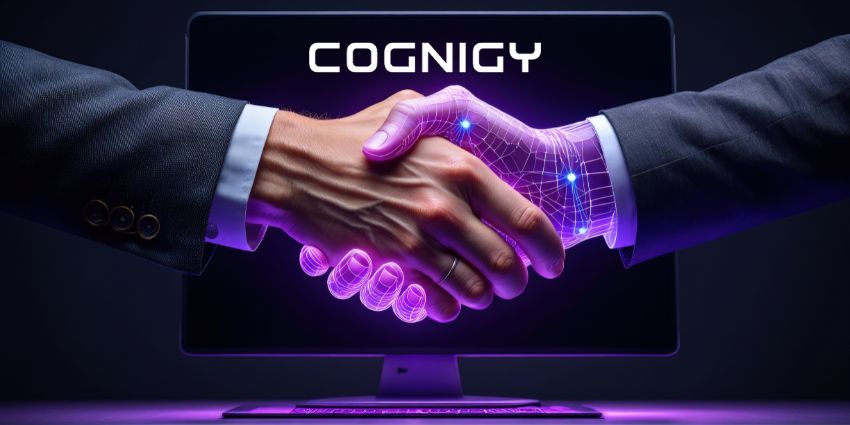In Stanley Kubrick’s 1968 film masterpiece, “2001: A Space Odyssey,” a crew of five American astronauts embark on a mission to Jupiter. The half-billion-mile journey takes place on an enormous spacecraft dubbed Discovery 1.
“The sixth crew member” is an advanced AI system, the HAL 9000, which is not a robot per se, but an embedded system described as: “The latest result in machine intelligence, which can reproduce most of the activities of the human brain with incalculably greater speed and reliability.”
What’s notable about the HAL 9000 system, apart from its pervasive creepy awareness and its ability to watch every move of the crew, is HAL’s superior ability to understand and respond to human speech.
Indeed, the entire film is an ode to human speech. A celebration of the tonal qualities and emotional pitch that the human voice conveys.
As it relates to the AI voice capabilities of today, HAL is an appealing vision of future conversational AI. It’s also an object lesson in super-advanced AI systems that could end up more intelligent than humans – and fully sentient – with potentially destructive intentions.
HAL’s appeal is his/its complete command of language and reasoning. Indeed, he (or it) is curiously seductive in his/its ability to discuss issues, share ideas, and respond to requests.
In one of the most chilling moments in the film, one of the astronauts, Dr. Bowman, sits in a small pod-shaped vehicle outside the ship. He has just retrieved the dead body of his colleague Dr. Poole, who – spoilers incoming – HAL killed while Poole attempted to fix a radar device atop the ship.
Bowman issues a request to HAL.
BOWMAN: Open the pod bay doors, please Hal. Hello Hal, do you read me? Hello Hal, do you read me?
HAL: Affirmative Dave, I read you.
BOWMAN: Open the pod bay doors, please, Hal.
HAL: I’m sorry Dave. I’m afraid I can’t do that.
Of course, movies are not a precise blueprint for the future. And today, our ability to converse with computers is limited. But that will not last long.
Eight Words That Changed the World
On 26 March 1876, Alexander Graham Bell, the inventor of the telephone, famously said to his assistant: “Watson, come here, I want to see you.”
One hundred and forty-six years later, the telephone remains the go-to device for human beings.
New research from RingCentral has found that more than 90 percent of business leaders use phones as one of their main communication tools.
Research continues to show that phone usage will increase. Indeed, the phone is still used across all parts of businesses, irrespective of size. Traditional phone systems are the most used.
“Telephony has been a constant in the workplace for decades,” said Steven Zachok, Vice President, Product Management at RingCentral. “While digital channels like messaging and video have grown in popularity, the study shows voice is here to stay. It is critical for customer engagement,” he explained.
Not only do more than 90 percent consider phones one of their main communication tools, 52 percent said it is their primary communication tool. Furthermore, 95 percent said phones are crucial to customer engagement and generating income.
Of course, digital transformation will replace many tasks. But the phone will continue to be an essential channel for customers, especially if it is a complex topic or laden with emotion.
The advent of smart devices like Google Home and Nest, and voice assistants like Siri and Alexa may further increase traffic to the voice channel. These cloud-based voice assistants, aided by speech recognition and Natural Language Processing (NLP) have become an unexpected mass-market driver of voicebots in contact centres.
The Rise of The Bots
Voicebots are a powerful tool to mitigate increased contact volumes. A voicebot can recognise customer intent and initiate a simple IVR journey so customers enjoy a positive first impression of the business. Their strategic role in the future of contact centres has only just begun.
A McKinsey & Company report indicates that “IVR systems are evolving from dumb menu systems into smart ‘voicebots’ capable of handling complex customer queries.”
Voicebots relieve contact centres of the arduous tasks of creating deep, nested menu structures. Instead, they can design an IVR journey so customers can transfer to the appropriate department in just two or three words.
All the complexity of creating the perfect IVR is gone. Customers enjoy a frictionless experience as they pass directly through to the right call queue.
The voicebot captures the exact reason the customer is calling. It funnels that information straight to the most appropriate agent. The agent immediately has the issue at hand, streamlining the experience for both parties.
Contact centres can also leverage this information to automate ticket tagging and understand why customers contact them. CX teams can then pinpoint critical contact drivers, identify broken processes, and assess failure demand.
Not Quite HAL, But Remember Alexander Graham Bell?
It’s been 146 years since Bell uttered the eight words that fundamentally changed history. So, to think that voice bots won’t get smarter, faster, and more intuitive is to underestimate its potential to transform the customer experience.
Neural voice technology can train voicebots to speak like humans and to hold natural-sounding conversations. It is a powerful technology that performs AI-based voice cloning.
From a single sound sample of just five seconds, it’s already possible for tools to generate entire sentences in a person’s voice as if they spoke the words themselves. That means future contact centres can design new self-service flows in natural-sounding speech.
Make It Easy and Serve Yourself Some Help
Voice-driven self-service interactions are powered by Robotic Process Automation (RPA). It does so by triggering actions that enable the voicebot to complete tasks.
For example, remember the classic customer question: “Where is my stuff?”
The bot understands that question and asks for an order number. It searches the tracking system and returns an answer immediately. That significantly simplifies the CX, especially compared to traditional deflection strategies.
Even when an issue is too complex to automate, a voicebot can assist with parts of the interaction. For example, the solution can collect customer information, process it, and pass it on to an agent. That reduces handle times and call abandon rates.
Alexa, Help My Voicebot. It Needs a Smart Display
Coincident with the rise of voicebots is the explosive growth in smart speaker sales. These devices have become a fundamental driver in the future of voice. Today, customers interact with a voicebot and receive the information they need without even speaking to a human.
Both technologies are evolving in tandem. Add to that the dawn of the smart display, which will provide customers with context to their responses. Built-in cameras will provide gesture and facial recognition.
Back to the Future
Customer communication is the pivot point within contact center CX. It’s starts there and ends there.
Customers today have embraced a variety of user interfaces, and they have more choices than ever: phone calls, websites, mobile apps – the list goes on.
But for all the transformation that digital technology has wrought, Alexander Graham Bell’s invention still echoes across our society, our businesses, and our lives.
The implication is clear. Companies must keep pace with evolving voice platforms. They must design convenient voice and video-powered customer service. Because the future – your customers –demands it.
Don’t Worry: It Doesn’t End This Way
Smart speakers and voicebots driven by voice recognition AI are on a development continuum. They are at an inception point with lots of room to develop more power and value.
But their final incarnation could be when they become invisible embedded systems in in our homes and offices. They’ll track our moves, listen to our conversations, offer help and advice, observe our gestures and emotions, and respond to our voice requests. This is not like HAL, but some rudimentary aspects of his/its capabilities.
The final confrontation in “2001: A Space Odyssey” is a conversation.
HAL: I know that you and Frank were planning to disconnect me. And I’m afraid that is something that I cannot allow to happen. This conversation can serve no purpose anymore. Goodbye.
RingCentral Knows the Voice
RingCentral offers a full suite of tools and technologies to harness the power of voice in the call center and across the contact center.
For more information about its voice technology, visit RingCentral.







